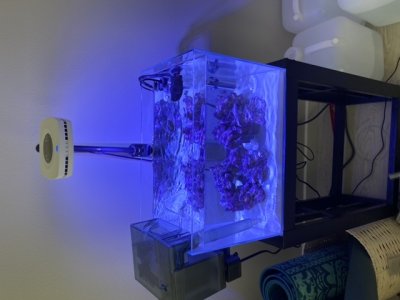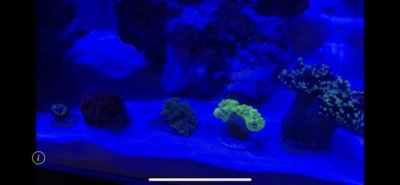- Joined
- Apr 19, 2020
- Messages
- 206
- Reaction score
- 79
Hello,
My tank was cycled using Dr Tim’s one and only and ammonia 3 weeks ago. It was completely cycled about a week and a half ago, tested by adding ammonia drops and next day reading 0.
I waited another week before adding my clownfish and he’s been doing fine. I got a few frags 6 plugs and this morning my ammonia read .5. It is a 10 gallon nano tank so I know it can fluctuate easily. I mean they’re some food rolling in the sand but I wasn’t sure why it’d spike today. I did a small water change just in case. Any suggestions appreciated.
also, any reason why my ph keeps dropping? I am manually topping off everyday but I have a line drawn on the tank that I fill up back to every morning. Not sure what else could cause it. I added a small amount of alk 8.3 to help buffer it back but I don’t want to keep doing that. Thank you in advance!
My tank was cycled using Dr Tim’s one and only and ammonia 3 weeks ago. It was completely cycled about a week and a half ago, tested by adding ammonia drops and next day reading 0.
I waited another week before adding my clownfish and he’s been doing fine. I got a few frags 6 plugs and this morning my ammonia read .5. It is a 10 gallon nano tank so I know it can fluctuate easily. I mean they’re some food rolling in the sand but I wasn’t sure why it’d spike today. I did a small water change just in case. Any suggestions appreciated.
also, any reason why my ph keeps dropping? I am manually topping off everyday but I have a line drawn on the tank that I fill up back to every morning. Not sure what else could cause it. I added a small amount of alk 8.3 to help buffer it back but I don’t want to keep doing that. Thank you in advance!




















